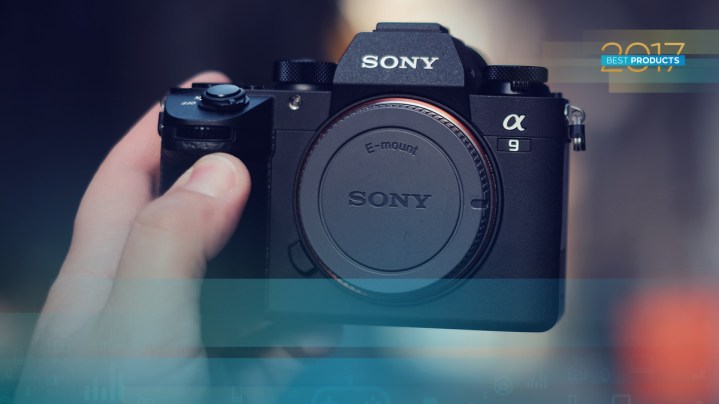

Winner
Sony A9
Camera companies continued to outdo themselves in 2017, making it that much more difficult to decide which camera should be considered this year’s best. But Digital Trends’ photo team didn’t lose focus when it came time to choose the top pick: the Sony A9.
Sony introduced several engineering marvels in 2017. There’s the RX10 IV, a high-performance bridge camera with a long-zoom fixed lens; the tiny RX0 that packs a 1-inch sensor; and the A7R Mark III, a tuned-up addition to the lauded A7R-series. Each of these cameras merit an award consideration — in fact, we even debated whether the A7R III should be in first place. In the end, it’s the A9, with its groundbreaking features, that won us over.
Designed with action photographers in mind, the mirrorless A9 uses a newly developed, 24.3-megapixel “stacked” full-frame sensor that achieves a readout speed that’s 20-times faster than a non-stacked sensor. Working with a new Bionz X image processor, the camera is capable of shooting an impressive 20 frames-per-second continuously in uncompressed RAW (it’s a bit of an overkill, to be honest). And to make this camera even sweeter, the A9’s electronic viewfinder does not suffer from blackouts — an achievement for mirrorless camera EVFs in general.
The best mirrorless cameras are now on par with their mirrored DSLR cousins.
It also has a terrific autofocus system, with 693 phase-detection points and 25 contract-detect points. Coupled with a terrific lens like Sony’s G Master 100-400mm F4.5-5.6 GM OSS, you’re guaranteed to capture a lot more sharp photos in burst mode than with many other cameras.
Granted, at $4,500 (body only), we know this isn’t a camera for everyday shooting. It wins our vote because of how far mirrorless camera technology has come. Once derided for sluggish performance, the best mirrorless cameras are now on par with their mirrored DSLR cousins. And if there’s a camera that’s showing us where the technology is heading, it’s the A9.
Read our Sony A9 hands-on review
See it

